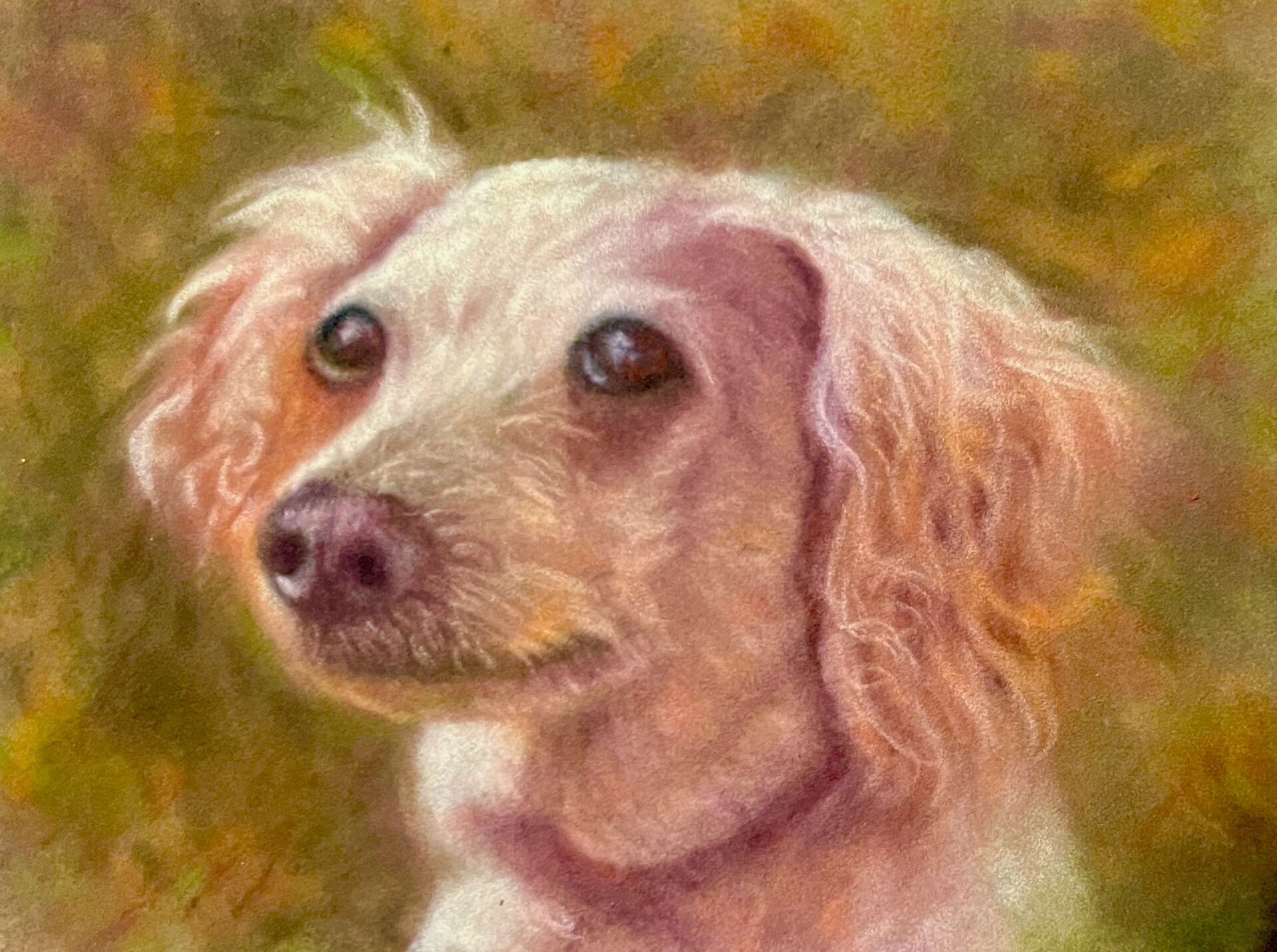We’re excited to introduce you to the always interesting and insightful Holly Horn. We hope you’ll enjoy our conversation with Holly below.
Alright, Holly thanks for taking the time to share your stories and insights with us today. We’d love to hear an interesting investment story – what was one of the best or worst investments you’ve made? (Note, these responses are only intended as entertainment and shouldn’t be construed as investment advice)
My best investment is an investment of time. Some of my favorite subjects to paint are portraits of people and pets, and landscapes of some of my favorite spots. Portraits are particularly special to me, as I strive to portray the essence of the individual. It has been my privilege to paint client’s family members, some who are alive and some who are no longer living, often portraying them together in one portrait. It feels like blurring the lines of space and time, to unite loved ones in this way. During the painting process, there is a special connection that takes place between the subject of the portrait and myself. Creating a carefully observed likeness of my model is an observant process that evolves best at a relaxed and unhurried pace.
Because a longer-term project can develop over weeks or months, I enjoy alternating between a more elaborate detailed painting and loose, quick studies. For example, I often participate with fellow artists in a 30 day “small painting a day” challenge. These can be plein air studies from nature, still life paintings, or sketches from memory. With portraits, there is quite a bit of observation and analysis, which requires left brain thinking. It is fun to shake it up with some loose right-brain activities, like quick sketches or color studies. The energy and focus of both disciplines is unique, and the two processes mesh nicely. Working quickly and slowly, alternately, keeps me sharp and intrigued, and sharpens my skills, no matter which mode is the choice of the day.



Great, appreciate you sharing that with us. Before we ask you to share more of your insights, can you take a moment to introduce yourself and how you got to where you are today to our readers.
As soon as I could hold a crayon, I knew that I was an artist. Memories of the thrill of putting on a smock and standing at an easel to paint are fresh in my mind.That thrill remains with me today, whenever it’s time to start on a new project.
As past president and cofounder of the Saint Louis Watercolor Society, and a student of watercolor since the age of 12, I first fell in love with medium of watercolor. Later, that love expanded to guache, colored pencils, soft pastels, and oils. Painting large murals in homes and commercial businesses, I gained a deeper appreciation of Michelangelo. After painting on ladders and scaffolding, I can’t imagine how artists of that time worked on such a massive scale, and sometimes over their heads!
For the last few years, my focus has been in colored pencil and pastels. The intensity of pure pigment of pastels is so captivating and the soft edges that can be achieved are beautiful. As a lifelong student and teacher of art, I love sharing discoveries with my students, in my online classes.



What’s the most rewarding aspect of being a creative in your experience?
The most rewarding aspect of being an artist is the privilege of connecting with the viewer, and inviting them to connect with themselves on a deeper emotional level, through the artwork.


Have you ever had to pivot?
In my second year of college, it was time to declare an official major. I had been taking art classes all along, with the intention of majoring in Art. There was a fine art track, and a commercial art track. I chose the commercial track, which may or may not have been the best decision for me. Looking back, it seems that maybe if I had chosen the fine art track, it would have fit more with my artistic sense. For the commercial track, class projects included things like designing toothpaste boxes and creating restaurant logos. I was more interested in creating beautiful paintings, yet I thought the commercial track would be more practical. My portfolio was reviewed, to determine if moving forward with an Art major was recommended. Since my interests aligned better with the fine art track, the recommendations were not stellar, so I felt I should pivot and switch majors to Spanish, which is another passion of mine. Earning my master’s degree in Spanish, becoming a certified teacher, and teaching foreign language students, as well as art students, for the last 40 years has been very enriching. I may not have taken the language studies much further than a couple of more years, had I majored in Art. The combination of Spanish and Art has provided a good balance. Teaching a foreign language has strengthened my approach to teaching Art, and vice versa. It is fascinating to tune in to how a student learns best, and to teach according to each student’s unique way of learning. Anyone interested in classes can reach me through my website: hollyhornfineart.com
Contact Info:
- Website: hollyhornfineart.com
- Instagram: hollyhornfineart
- Facebook: Holly Horn Fine Art
Image Credits
Tess Alexander & J. Beattie


